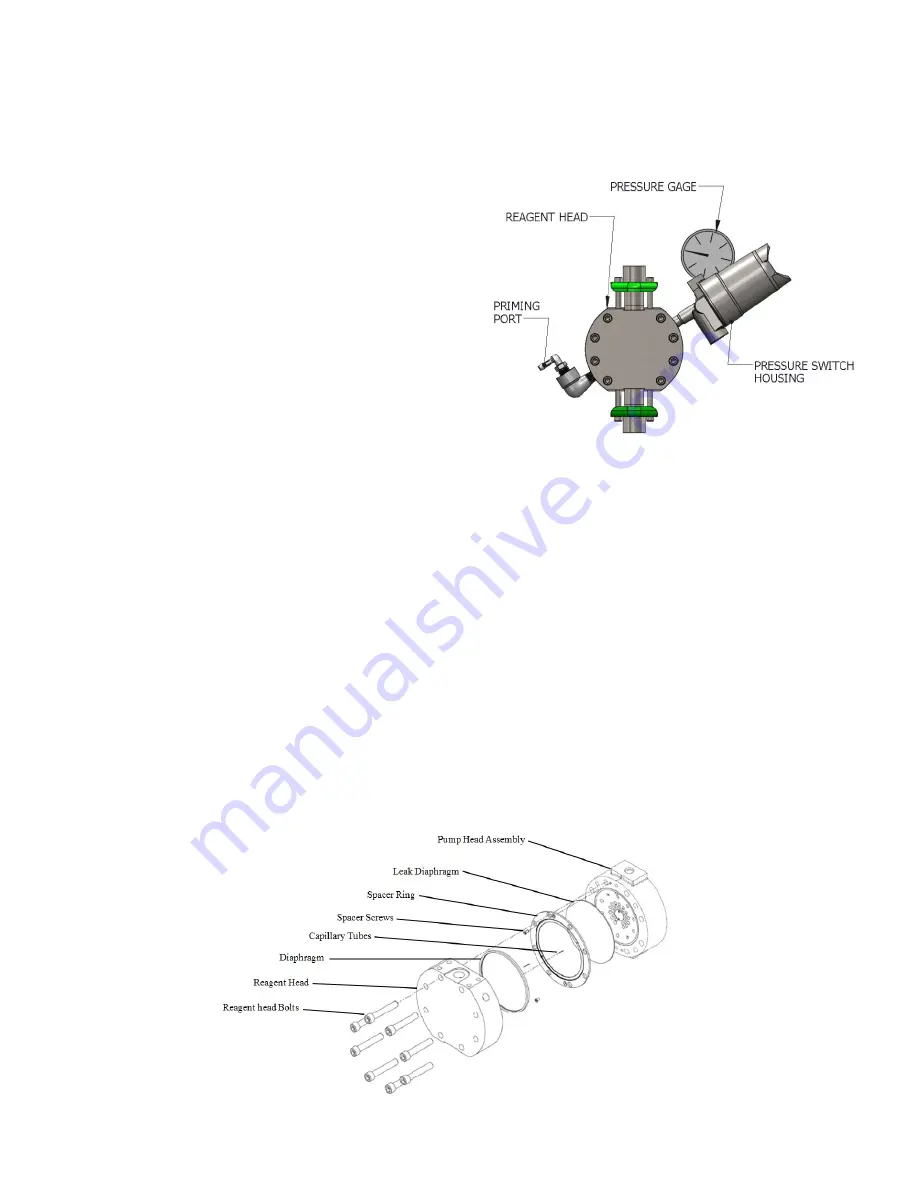
Page 37 of 52
11.
APPENDIX I
11.1
PULSAlarm® Leak Detection System
The PULSAlarm® leak detection system utilizes a
two-layer PTFE diaphragm, coupled to a pressure
switch. The system is initially primed by filling the
void within the detection assembly and between
the diaphragm layers with a barrier fluid. The
setup process then bleeds excess fluid from
between the diaphragm layers until they are in
close contact.
During normal pump operation, the two layers of
the PTFE diaphragm bear directly against one
another, and there is no pressure generated
between the two layers. The sensing system
monitors the space between the layers, which will
remain at zero pressure if the diaphragm layers
remain undamaged.
Figure 53
In the event of a failure of either layer of the diaphragm, liquid will enter the space between the two
layers. This liquid will be either the hydraulic oil (if the rear layer fails) or the pumped fluid (if the front
layer fails). As the pump operates, this liquid will generate pressure between the layers of the
diaphragm that will then be transferred outwards by the barrier fluid. This fluid will create pressure
against the pressure switch. The switch has a trip point of 20 PSI (1.37 BAR). When this pressure is
reached the switch will operate.
The output of the switch (both normally closed, and normally open connections are available) can then
signal the failure of the diaphragm. It is recommended that the pump be stopped in the event a leak is
detected. Immediate attention to the problem, followed by cleanup and appropriate maintenance, will
avoid further damage to the pump.
11.2
PULSAlarm® Leak Detection Diaphragm
Double, or sandwiched, PTFE diaphragms are sealed at the peripheries to an intermediate metal spacer
ring. The space between the diaphragms is sealed so that the diaphragm functions as does a standard
single diaphragm. The space is filled with a small amount of barrier fluid (silicon oil is factory default
unless advised otherwise). This space is connected to an electrical switch that actuates in response to a
buildup of pressure resulting from rupture of either or both diaphragms. Switch operation can be used
to perform any external function, typically to signal an alarm or turn off the pump.
Figure 54
















































